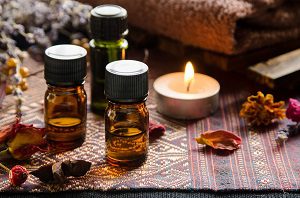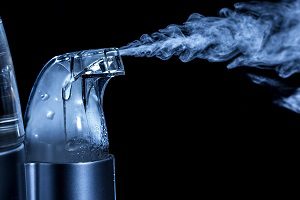When it comes to yoga and meditation, there is no shortage of health benefits. For everything from the body to the mind and soul, the perks are endless. These benefits can range from improved flexibility of the body to clarity of mind and a powerful sense of purpose. Combining both physical exertion and meditation, yoga can even be a natural health alternative to the traditional “solutions” of the modern world. First, what do you need to start an impactful yoga and meditation routine? While these aren’t all required, here are a few tips for getting started:
First, what do you need to start an impactful yoga and meditation routine? While these aren’t all required, here are a few tips for getting started:
- Get a yoga mat: A yoga mat will help you stay aligned throughout your routines.
- Learn the terms: While this isn’t necessary, it will help to know some of the more common yoga terms, particularly when taking classes. Everything from Yin Yoga to Bikram to Hatha and Hot Yoga, it couldn’t hurt to know the various routines.
- Keep a journal: Write down your “aha!” experiences so they don’t get swept under the mat (no pun intended). Journaling these experiences will improve your practice over time.
- Keep it consistent: Make a space in your home where you can practice in a consistent environment. Comfort and familiarity are important to maximize the benefits.
- Take breaks: It’s important to take breathing breaks. After all, breathing is one of the most effective tools for curbing stress.
- Know the benefits: Understanding the benefits of yoga will help give you focus. For example, you might be looking to ease anxiety, increase flexibility, reduce your weight, and on and on.
Now onto the good stuff: How you can use essential oils for yoga and meditation to improve your routines and overall quality of life.
[amazon box=”B00G6REFKM”]
Using Essential Oil Recipes for Yoga Practice
Once you’ve prepared your mind and body – in a familiar and relaxing environment – it’s time to set your intentions for the routine. Many yogis will burn incense to enhance their meditation. Essential oils are another popular tool, as they encourage emotional release, provide inspiration, and deepen your spiritual connection.
Harboring a number of therapeutic benefits, essential oils enhance focus and centering of the mind and body. In addition to the benefits you receive during your practice, they are great to help you relax and unwind both before and after you’re finished.
There are two ways you can apply essential oils when performing yoga. The first method is to apply the oils topically. You can either apply the oils singularly or mix several for more targeted benefits (depending on your skin type and quality of oil, we recommend diluting with a carrier oil).
Here are some popular yoga oils to consider:
- Lavender: What some might label the “starter oil,” lavender is an all-around oil that promotes relaxation.[amazon box=”B00PYS7R7M”]
- Sandalwood: Often used for relaxation, sandalwood can enhance focus and mental clarity.[amazon box=”B07H8RWLFS”]
- Frankincense: A treasured oil used back as far as Bible times, frankincense can help with many forms of stress and anxiety.[amazon box=”B00O13KZ70″]
- Ylang ylang: Popular in a range of different fragrances, ylang ylang promotes and reduces tension.[amazon box=”B00PIWIOYO”]
- Orange: Containing a citrusy scent, orange is a great oil for improving mood, while boosting focus and concentration.[amazon box=”B0019LPL8A”]
- Peppermint: Often used for its respiratory benefits, peppermint will clear up the airways to improve breathing.[amazon box=”B005V2UIM2″]
These are just a few among many other oils that can help enhance your yoga experience.
 5 Blends to Diffuse During Meditation
5 Blends to Diffuse During Meditation
The second application, which is generally the preferred method for meditation, is to run a single oil or blend through a diffuser. Here are some great yoga blend aromatherapy recipes to consider:
- Joyful blend: Diffuse a few drops each of lavender, orange, and bergamot. The citrus from the orange will promote a positive mood, while the lavender and bergamot will promote relaxation.
- Peaceful blend: Diffuse a few drops each of lavender, ylang ylang, and frankincense. These relaxing, yet uplifting, oils will promote a sense of peace and serenity.
- Spiritual blend: Diffuse a few drops each of lavender, bergamot, and sandalwood. This blend provides a grounding effect that will deepen the connection with your inner self while encouraging a positive sense of well being.
- Stabilizing blend: Diffuse a few drops each of sandalwood, cedarwood, and ginger. This blend boosts stabilization during your practice to develop better physical and mental strength.
- Breathing blend: Diffuse a few drops each of rosemary, peppermint, and eucalyptus. This blend helps you concentrate your breathing so you are inhaling and exhaling at the right intervals. This blend is also effective when applied topically to the chest, as it will help open the airways.
You can also use essential oils for cleaning your mats before and after use. Citrusy oils like lemon and orange can drive off germs and bacteria, while providing a pleasant after-scent.
Additional Yoga Tips for Maximizing Your Routines
Realize that yoga isn’t simply an exercise. It’s an experience that engages your mind and can offer both relaxation and energizing benefits. It develops a mind-body connection that encompasses fitness, health, and wellness. Aromatherapy is a great way to further deepen that connection and ignite your senses.
If you’re interested, below are some of the more popular types of yoga. These are great to know, because adding a variety of types of yoga to your arsenal can help keep you in balance.
- Yin Yoga: The opposite of faster-moving practices like Ashtanga, Yin Yoga poses can be held for several minutes at a time. This routine is intended to address your deeper connective tissues to restore elasticity and length.
- Hot Yoga: As the name implies, Hot Yoga is performed in a room that is heated. This heat allows you to deepen your poses, more so than room-temperature classes. Keep in mind, though, that you can overstretch, so be careful.
- Bikram: Prepare to sweat with this one. Bikram is similar to hot yoga in that it is also performed in a heated room (around 150 degrees with significant humidity).This can be a more vigorous practice, in a heated setting, so be sure to hydrate and take it slower the first few times.
- Ashtanga: One of the more orderly practices, Ashtanga is a six-series sequence of poses. In each class, you will perform the same poses in the same order. Be sure to breathe and flow through each of the poses to develop internal heat.
- Vinyasa: This routine connects breathing and movement together in a dance-like manner. It is often a faster pace practice where you don’t spend much time in each pose. Runners, athletes, and power exercisers often prefer Vinyasa due to its quick pace.
Thanks for reading! We hope you now feel more equipped when practicing your routines!



Thank you!